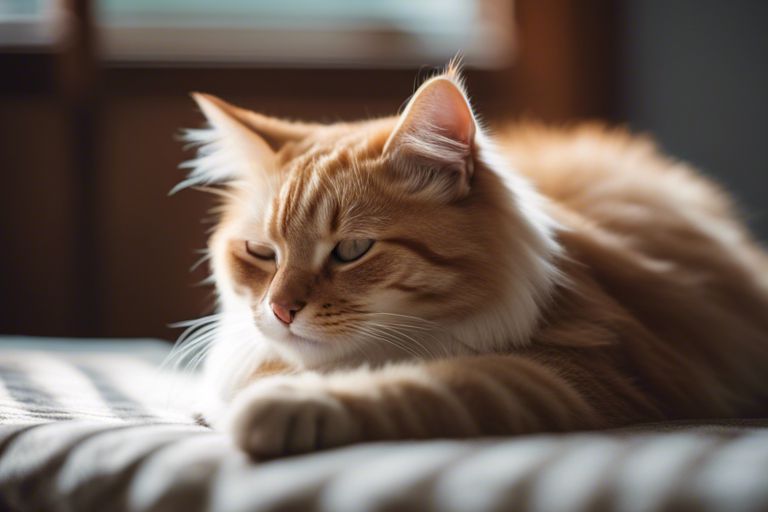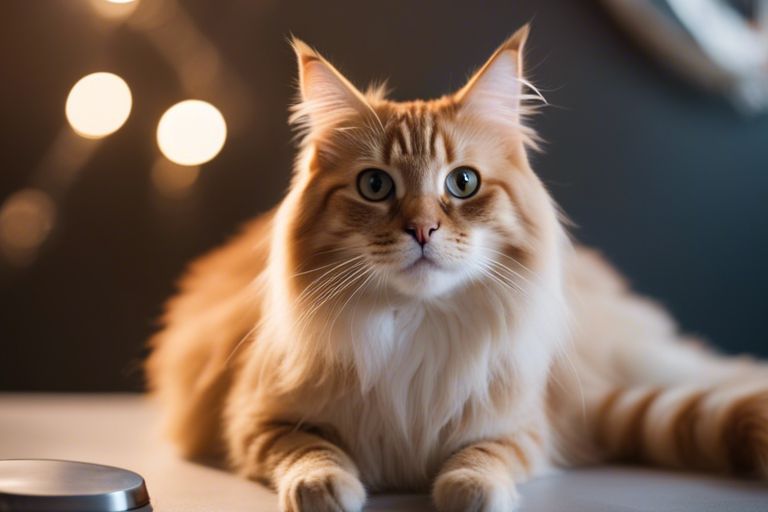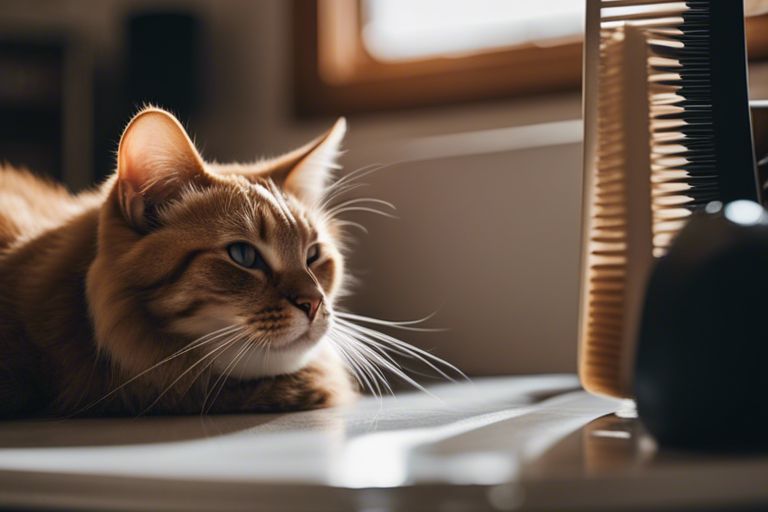Do you find yourself struggling to keep your cat calm and cooperative during grooming sessions? With the right training and techniques, you can help your cat become more relaxed and comfortable during grooming. Whether it’s brushing, nail trimming, or bathing, there are strategies you can use to make the experience as stress-free as possible for both you and your cat. In this blog post, we’ll provide you with tips and tricks for training your cat to be more calm during grooming sessions.
Key Takeaways:
- Start Early: It’s important to introduce grooming to your cat at a young age to help them become more comfortable with the process.
- Positive Reinforcement: Use treats and praise to reward your cat for calm behavior during grooming sessions.
- Gradual Introduction: Slowly introduce grooming tools and touch to your cat, allowing them to become accustomed to the sensations over time.
- Be Patient: It’s essential to be patient and understanding with your cat, as grooming can be a stressful experience for them.
- Professional Help: If your cat continues to have trouble staying calm during grooming, seek the advice of a professional groomer or veterinarian for additional assistance.

Preparing for Grooming
If you want to train your cat to be more calm during grooming, it’s essential to lay the groundwork by preparing for the grooming session. This includes creating a comfortable environment and selecting the right tools for the job.
Creating a Comfortable Environment
When grooming your cat, it’s crucial to create a comfortable and safe environment for both you and your feline friend. Choose a quiet, well-lit space where you can easily access your grooming tools. Ensure that the room is free from any potential hazards, such as small objects that your cat could swallow. Additionally, make sure that the room is at a comfortable temperature, as cats are sensitive to extreme heat or cold. By creating a peaceful and secure environment, you can help reduce your cat’s anxiety during grooming sessions.
Selecting the Right Tools
The right tools can make a significant difference in your cat’s grooming experience. When selecting grooming tools, opt for ones that are specifically designed for cats. Look for soft-bristled brushes and combs that are gentle on your cat’s skin and coat. This will help prevent any discomfort or irritation during the grooming process. Additionally, make sure to have a pair of pet-safe nail clippers on hand if you plan to trim your cat’s nails. The use of improper tools can lead to injury, so it’s essential to invest in high-quality, cat-friendly grooming tools to ensure a positive grooming experience for your feline companion.

Training Techniques
Despite the common belief that cats cannot be trained, it is possible to teach your cat to be more calm during grooming. Using the right training techniques and a little patience, you can help your feline friend learn to tolerate grooming sessions without becoming anxious or aggressive.
Positive Reinforcement
One of the most effective ways to train your cat to be calm during grooming is through positive reinforcement. This involves rewarding your cat for calm behavior during grooming sessions. You can use treats, praise, or even playtime as rewards for remaining calm while being groomed. By associating grooming with positive experiences, you can help your cat form a more positive attitude towards the grooming process. Remember to be consistent with your rewards and to only give them when your cat is exhibiting the desired calm behavior.
Desensitization and Counterconditioning
Desensitization and counterconditioning involve gradually exposing your cat to the grooming process in a way that minimizes anxiety and negative reactions. This can be done by slowly introducing grooming tools and touching your cat in areas that are typically sensitive during grooming. You can start by simply touching the grooming tools to your cat without using them, and gradually progress to brief grooming sessions. Pair these sessions with something your cat enjoys, such as treats or playtime, to create a positive association with grooming. Over time, your cat can learn to tolerate and even enjoy grooming.

Grooming Practices
To ensure that grooming sessions are as calm and stress-free as possible for your cat, it is important to implement the right grooming practices. This will not only make the experience more pleasant for your cat, but also easier for you.
Regular Grooming Sessions
Regular grooming sessions are essential for keeping your cat’s coat in good condition and preventing matting. By getting your cat used to being groomed from a young age, you can help them become more comfortable with the process. Start by gently brushing your cat for a few minutes each day, gradually increasing the duration as your cat becomes more comfortable. This will help your cat to associate grooming with positive experiences, making them more calm and cooperative during grooming sessions.
Handling Your Cat’s Stress Points
During grooming, it’s important to be aware of your cat’s stress points. These are areas such as the ears, tail, and paws, which are particularly sensitive and can cause your cat to become stressed or agitated if handled incorrectly. When grooming these areas, be extra gentle and patient, and try to keep the experience as positive and stress-free as possible. If your cat becomes too stressed, do not force them to continue, as this can cause further anxiety and resistance in future grooming sessions.
Maintaining Progress
After making progress in training your cat to be more calm during grooming, it’s important to maintain the progress you’ve achieved. Consistency is key when it comes to keeping your cat calm and cooperative during grooming sessions. By continuing to use the same techniques and remaining patient, you can help your cat feel more comfortable and relaxed during grooming.
Consistent Routines
Consistency in your cat’s grooming routine is essential for maintaining progress. Keep to a regular grooming schedule, whether it’s brushing, nail clipping, or bathing. Your cat will become accustomed to the routine and be less likely to become anxious or stressed. Additionally, using the same grooming tools and products can also help create a sense of familiarity for your cat, further enhancing their calmness during grooming sessions.
When to Seek Professional Help
If despite your best efforts, your cat continues to exhibit extreme stress or aggression during grooming, it may be time to seek professional help. A professional groomer or a veterinarian who specializes in cat behavior can provide additional insights and techniques to help your cat become more at ease during grooming. They may also be able to identify any underlying medical issues that could be contributing to your cat’s behavior, which is important for ensuring your cat’s overall wellbeing.
Remember, your cat’s comfort and safety is the top priority, so it’s important to be proactive in seeking help if needed. Ignoring signs of extreme stress or aggression can be dangerous for both you and your cat.
The Importance of Training Your Cat to Be Calm During Grooming
The key to training your cat to be more calm during grooming is consistency and patience. Start by familiarizing your cat with the grooming tools and gradually introduce them to the grooming process. Use positive reinforcement, such as treats or praise, to reward calm behavior. Additionally, create a calm and quiet environment to reduce stress and anxiety during grooming sessions. With time and dedication, you can successfully train your cat to be more relaxed and cooperative during grooming.
FAQ
Q: How can I train my cat to be more calm during grooming?
A: Training your cat to be calm during grooming requires patience and consistency. Start by getting your cat used to being handled by gently petting and stroking them. Reward them with treats when they stay calm. Gradually introduce grooming tools like brushes or combs, allowing your cat to sniff and explore them first. Begin by grooming for short periods of time and gradually increase the duration as your cat becomes more comfortable. Stay calm and speak softly to your cat during grooming to help them relax.
Q: What grooming techniques can I use to help my cat stay calm?
A: Using gentle and slow grooming techniques can help keep your cat calm. Start by grooming in a quiet and familiar environment to reduce stress. Use soft, smooth strokes with the brush or comb to avoid pulling on your cat’s fur. Pay attention to your cat’s body language and stop grooming if they show signs of discomfort. It’s important to make grooming a positive experience for your cat by offering treats and praise during and after the grooming session.
Q: Are there any products that can help calm my cat during grooming?
A: There are several products available that can help calm your cat during grooming. You can use pheromone-based products like sprays or diffusers to create a calming environment for your cat. Additionally, consider using grooming aids such as grooming gloves or mats that can provide a gentle massage while grooming. Some cats may also benefit from the use of calming supplements or treats, but it’s important to consult with your veterinarian before using any new products.

Jayley, a devoted cat enthusiast, also writer for other cat blog as well. She aims to dedicated to providing comprehensive information, insights, and advice on everything you’d ever want to know about our whiskered companions.
